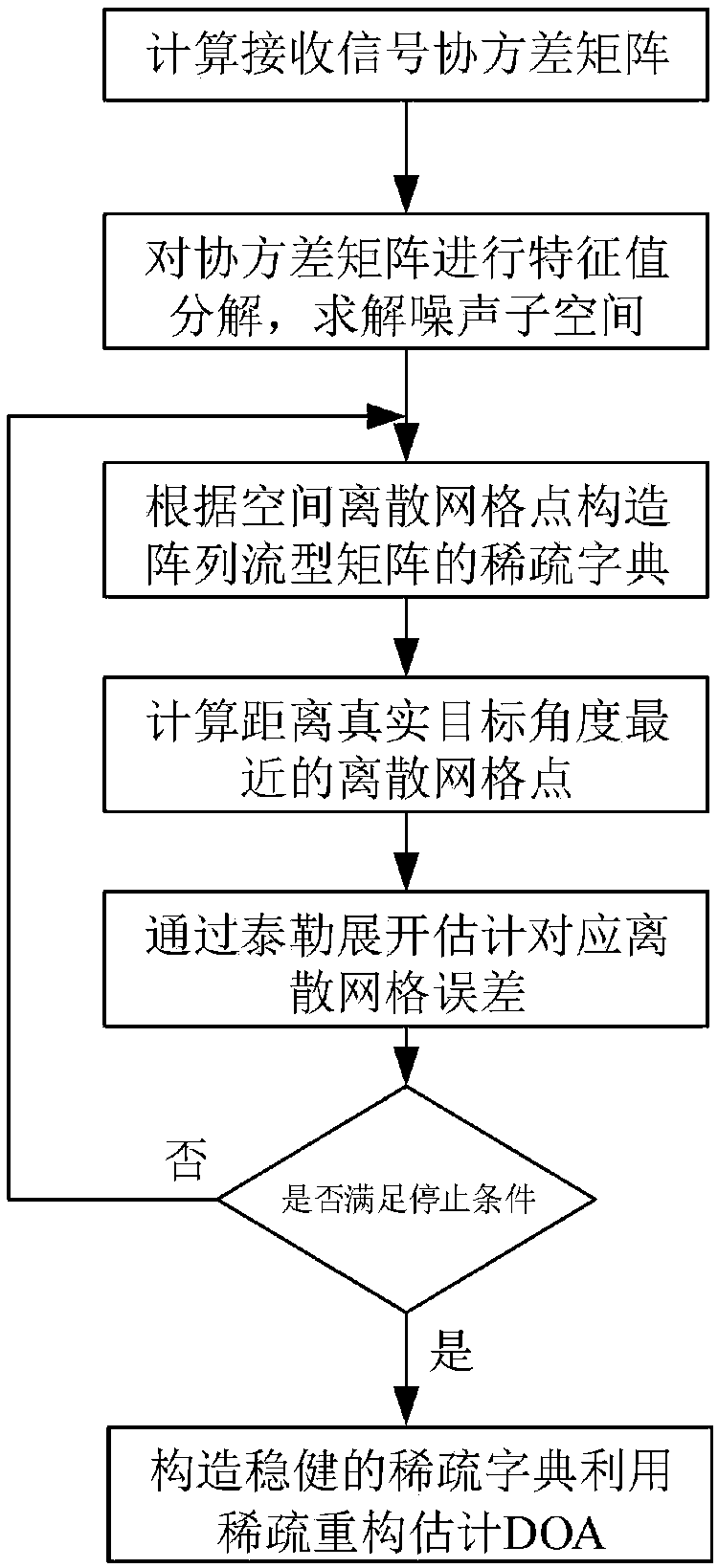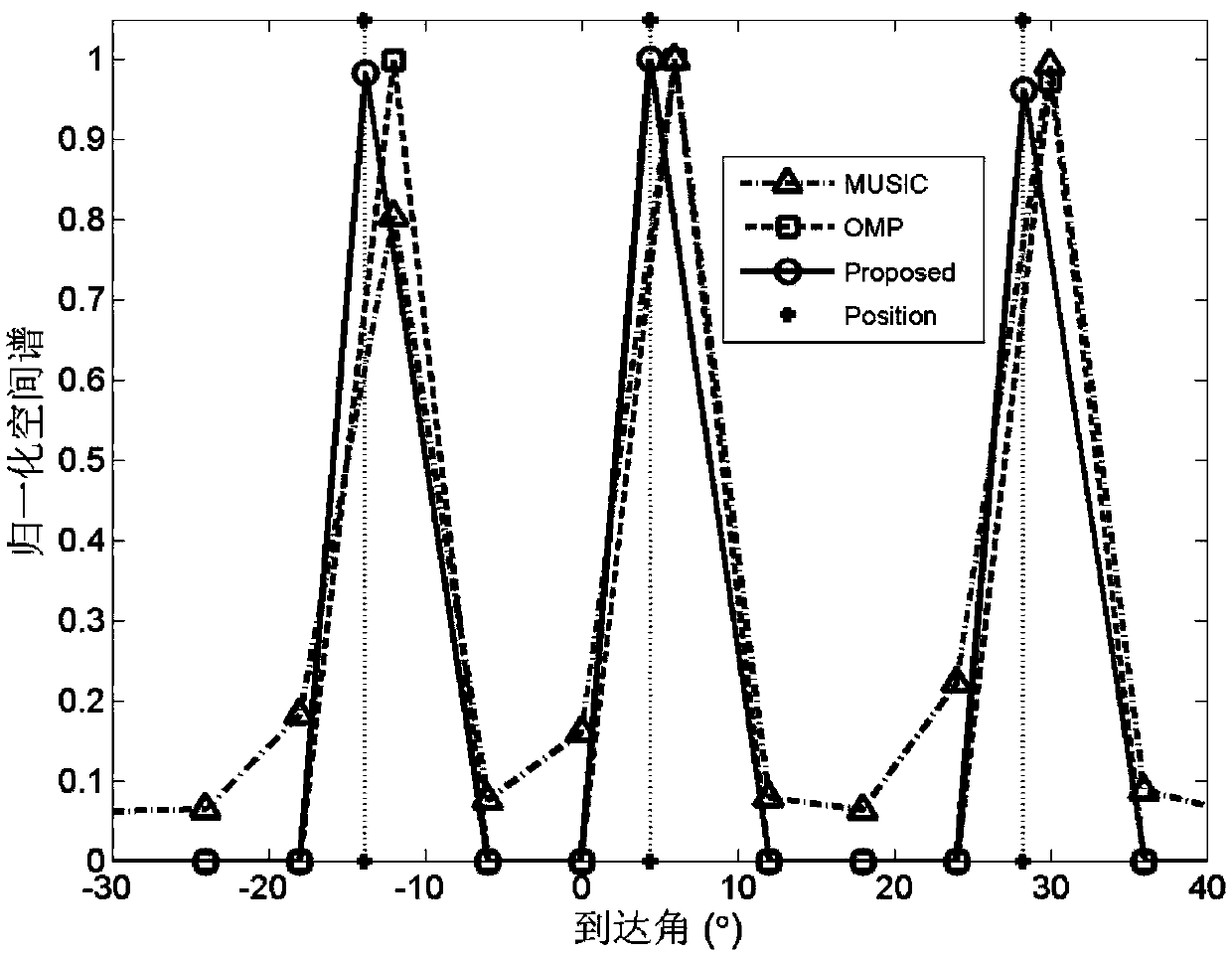Target arrival angle estimation method based on spatial discrete grid dynamic update
A technology of spatial dispersion and angle estimation, which is applied in directions such as direction finders using radio waves, radio wave direction/bias determination systems, etc. In order to achieve high estimation accuracy and reduce computational complexity,
- Summary
- Abstract
- Description
- Claims
- Application Information
AI Technical Summary
Problems solved by technology
Method used
Image
Examples
Embodiment Construction
[0062] Below in conjunction with accompanying drawing, method provided by the present invention is described in more detail:
[0063] Step 1. Calculate the covariance matrix of the array antenna
[0064] Assume that the antenna element position of the uniform linear array is d=[d 0 , d 1 ,...,d M-1 ] T , not generally assuming that the first antenna is d 0 = 0, then d m =(m-1)d. If there are K far-field and uncorrelated targets irradiated on the line array, assuming that the incoming wave direction of the target is θ=[θ 1 ,θ 2 ,...,θ K ] T , where θ k is the incoming wave direction of the kth target, then the baseband received signal of the target under the tth snapshot can be expressed as:
[0065]
[0066] in is the steering vector corresponding to the kth target, A=[a(θ 1 ),...,a(θ K )] is the array flow matrix. n(t) is additive Gaussian white noise with mean value of 0 and variance of
[0067] According to the received signal mathematical model given ...
PUM
 Login to View More
Login to View More Abstract
Description
Claims
Application Information
 Login to View More
Login to View More - R&D
- Intellectual Property
- Life Sciences
- Materials
- Tech Scout
- Unparalleled Data Quality
- Higher Quality Content
- 60% Fewer Hallucinations
Browse by: Latest US Patents, China's latest patents, Technical Efficacy Thesaurus, Application Domain, Technology Topic, Popular Technical Reports.
© 2025 PatSnap. All rights reserved.Legal|Privacy policy|Modern Slavery Act Transparency Statement|Sitemap|About US| Contact US: help@patsnap.com



